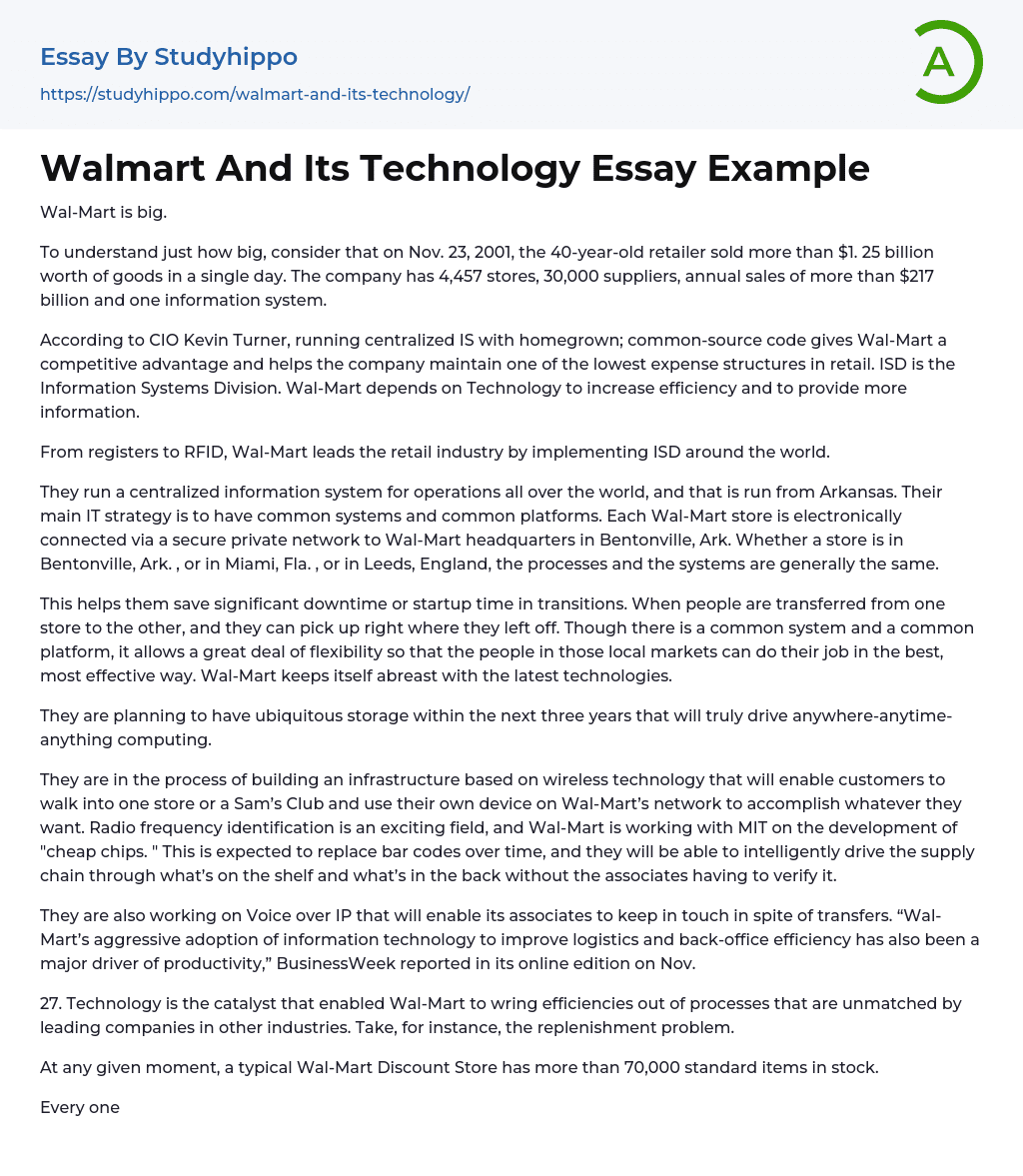Wal-Mart's vastness is demonstrated by the fact that on Nov. 23, 2001, the retail giant sold more than $1.25 billion worth of goods in just one day.The company operates 4,457 stores, uses 30,000 suppliers, and sees annual sales exceed $217 billion. One of their key advantages is their centralized information system approach that utilizes common-source code to maintain a low expense structure for retail operation. Wal-Mart's Information Systems Division (ISD) caters to the retail giant's technology needs, increasing efficiency and providing essential info from registers to RFID. With ISD implemented worldwide, Wal-Mart leverages a centralized info system run from Arkansas that facilitates standardization of process and systems across all locations, from Leeds, England, to Miami, Florida, and Bentonville, Ark., where the company is headquartered. This standardization decreases downtime during transitions and enables seamless transitions for employees tr
...ansferred from one store to another.
Wal-Mart has a flexible system and platform that allows local markets to work efficiently. They are constantly updating their technology and plan to have anywhere-anytime-anything computing through ubiquitous storage in the next three years. Customers can use their own device on Wal-Mart's wireless network. Radio frequency identification technology is being developed with MIT to replace bar codes in order to streamline the supply chain. Voice over IP is also being implemented for associate communication. BusinessWeek reported that Wal-Mart's information technology advancements have been a major driver of productivity and efficiency. Their use of technology in logistics and back-office processes has surpassed leading companies in other industries.The replenishment problem is exemplified by Wal-Mart Discount and Supercenter stores, which require identification, ordering, inventorying, and replenishing of over 70,000 standard items and over 20,00
perishable grocery items. Since 1996, Wal-Mart has used handheld computers connected to in-store servers via a radio-frequency network to access an internal inventory system. This technology tracks real-time information for inventory on hand, deliveries, and backup merchandise in distribution centers. With mobile computing, associates have access to real-time suggested ordering quantities, which assists them in keeping stores replenished and items in stock. By utilizing technology to simplify processes, eliminate waste, and analyze meaningful information, Wal-Mart has become one of the world's top retailers.
- Accounting essays
- Andrew Carnegie essays
- Automation essays
- Business Cycle essays
- Business Intelligence essays
- Business Model essays
- Business Operations essays
- Business Software essays
- Cooperation essays
- Cooperative essays
- Corporate Social Responsibility essays
- Corporation essays
- Customer Relationship Management essays
- Family Business essays
- Franchising essays
- Harvard Business School essays
- Harvard university essays
- Human Resource Management essays
- Infrastructure essays
- Inventory essays
- Logistics essays
- Management essays
- Manufacturing essays
- Market essays
- Marketing essays
- Multinational Corporation essays
- News Media essays
- Online Shopping essays
- Quality Assurance essays
- Richard Branson essays
- Sales essays
- Selling essays
- Shopping Mall essays
- Small Business essays
- Starting a Business essays
- Stock essays
- Strategy essays
- Structure essays
- Trade Union essays
- Waste essays
- Adidas essays
- Amazon essays
- Apple essays
- Bmw essays
- British Airways essays
- Burger King essays
- Coca-Cola essays
- Company essays
- Costco essays
- Dell essays




